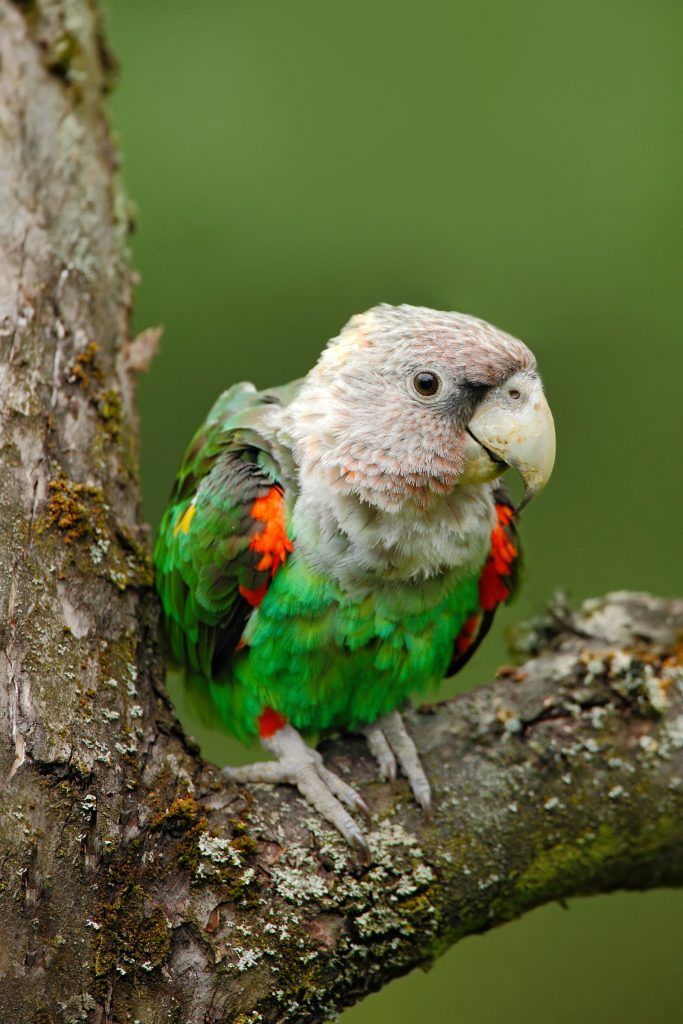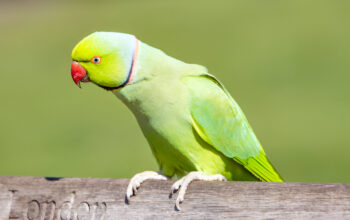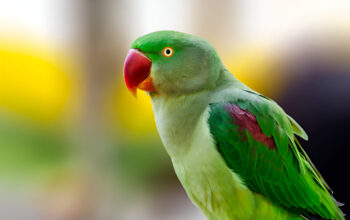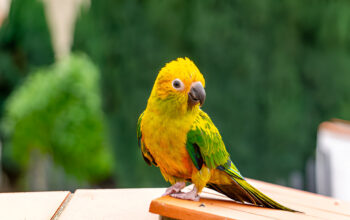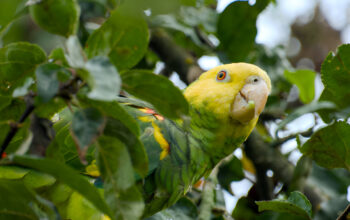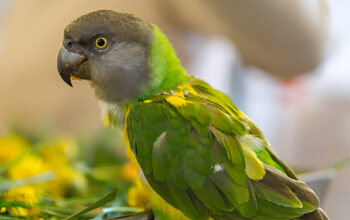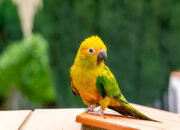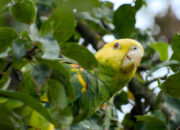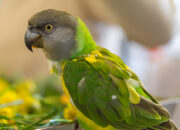Cape Parrot: The Ultimate All in One Guide to this Rare Species of Parrot
Cape Parrot Overview
The Cape Parrot (Poicephalus robustus) is a beautiful species native to South Africa. With its stunning green feathers, strong beak and incredible brain, the Cape Parrot has become the darling of bird fanciers, conservationists and ornithologists around the world. It’s so majestic that its species is listed as endangered thanks to habitat destruction, disease, and even the illegal pet trade.
Knowledge of the Natural History of the Cape Parrot
Range and Distribution Range and distribution is also probably affected.
The Cape Parrot is native to South Africa, where it is found in all Afromontane forests of Eastern Cape, KwaZulu-Natal and Limpopo province. These forests are composed of thick stands of mature yellowwood trees and other native types of vegetation, which give them the food and nest sites they need to survive.
Their natural habitat it is not as extensive as other parrots, that’s why they are more susceptible to changes in their environment. Regrettably this habitat is disappearing quickly due to clearance for agriculture, urbanisation and logging.
Weather and Environmental Conditions
Cape Parrots inhabit chilly wet forest at an altitude of 900–1,600 m (3,000–5,200 ft). Such conditions are ideal for the Podocarpus (yellowwood) trees; the seeds and fruit of which compose the majority of the parrot’s diet. The mild climate and thick canopy cover is important for their nesting and feeding patterns.
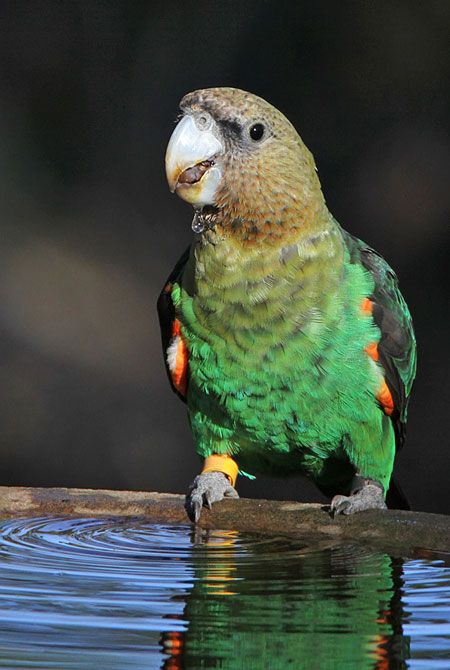
Description of Physical Characteristics of the Cape Parrot
Scale, Size, and Body Form
Cape Parrots are medium sized birds, usually 33 to 38 cm (13–15 in) in length from beak to tail. They are heavier than most other Poicephalus species, ranging from 300- (GAB) to 400- (both KUH) grams. They are strong and well-muscled in the body, made for powerful flight and foraging.
They are generally broad-winged and have rounded tails; the wings of Sylviidae have 10 developed primary feathers and the tails have 12 feathers (Russell 2000, Sell 1968).
Distinct Plumage and Coloration
The Cape Parrot is highly aesthetic in that it’s beautifully coloured:
- The head is a dull brownish grey with a greenish tinge on the crown.
- The body plumage is mostly emerald green.
- The underside is a beautiful golden-orange wash, particularly on the belly and thighs.
- The bill is large, strong, curved and pale ivory or horn-grey.
- It has dark gray legs and feet.
Sexual dimorphism is relatively undistinguished, but females would usually exhibit darker amounts of orange across forehead and cheek and this feature is why it is used to identify females in their natural habitat.
The Intelligence and Behaviour of the Cape Parrot
Clever Birds, Social Creatures
Cape Parrots are among the most intelligent and social birds. They gather in little flocks or families and convey through a combination of croaks, growls, and chattering.
They are highly intelligent while kept in captivity and can mimic human speech and solve puzzles. They develop a strong relationship with their human caretakers and showcase playful and loving attitudes.
Vocalisations and Communication
Their communicative sounds consist of a unique “growling’ call made when frightened or agitated, accompanied by softer whistles and chatters while resting. Communication is vital for flock cohesion and alerting danger in the wild.

Diet and nutritional requirements of the Cape Parrot
Natural Diet in the Wild
The Cape Parrot lives on a very specialized diet, which is composed mainly of:
- Yellowwood (Podocarpus) fruit and seeds
- Nuts or hard seeds in the forests of South Africa
- Occasional berries and fruits
A giant beak, which comes in handy for opening the hard seed cases that many other birds are unable to deal with.
Recommended Diet for Cape Parrots in Captivity
A well-balanced diet is important to their health in captivity:
- Formulated testbased on high quality pellets using offered in the desired basic nutrients
- Apples, pears, mangoes, berries (no avocado or citrus are also good fresh fruits for them to try)
- Raw nuts- almonds, walnuts and pecans (in moderation due to the fat content)
- Fresh veggies such as lettuce, carrots, bell peppers
- Clean, fresh water daily
Stay away from sugary, salty and processed foods that can lead to obesity and health problems.
Housing, Caging and Environmental Enrichment
Cage Size and Design
Cape Parrots are active, energetic birds that need a spacious cage or aviary for flying, climbing, and playing. Recommended minimum dimensions of the cage :
- 36″(L)x24″(W)x48″(H)
The cage should be constructed of heavy, non-toxic materials, with bars to climb on.
Environmental Enrichment
Caring for Your Cape Parrot To ensure a happy and healthy Cape Parrot:
- Offer wood chew toys to keep their natural chew impulse satisfied.
- Engage them with foraging toys that stimulate problem solving and keep the mind occupied.
- Add swings, ropes, and perches in a range of sizes and textures.
- It is ideal to rotate toys on a regular basis to keep him from becoming bored.
Social Interaction
Being so sociable, they require a minimum of a few hours of companion time each day. They enjoy:
- Grunting and playing with their people
- Listening to birds, music
- After having overseen out-of-cage time for flight as well as exploration

Breeding Cape Parrots: Common Problems and Helpful Hints
Breeding Behavior under field and controlled conditions
Cape Parrots are said to be monogamous and show marked pair bonding. They breed in natural tree hollows, typically using old yellowwood trees. Breeding season is usually from September to January.
Breeding is difficult in captivity as a result of:
- Requirement of spacious and spacious aviaries with naturalistic breeding locations
- Sensitivity to perturbation and stress
- The need for compatible well-bonded pairs
Nesting and Incubation
Females lay 2-4 eggs, which are incubated for about 28 days. Both adults take role in feeding the young after they hatch. The duration of the fledging period is 8 to 10 weeks when young parrots follow their parents out of the nest.
Disease Free Status and Common Health Problems of Cape Parrots
Typical Health Issues
Although hearty birds as a whole, the Cape Parrot is susceptible to:
- Psittacine Beak and Feather Disease (PBFD): Viral disease with symptoms of feather loss and beak abnormalities.
- Respiratory infections: Commonly caused by inadequate ventilation or dirty cages.
- Nutritional insufficiencies: Especieally vitamin A deficiency which will affect the feather and skin condition.
- Overweight: That causes it -bad diet and no exercise.
Preventive Care
- Feed a well balanced diet (add vitamins if veterinarian recommended).
- Keep good hygiene and ventilation in place.
- Have your bird seen by an avian vet routinely.
- Isolate new birds before introducing them to other pets.
Conservation status and attempts to save the Cape Parrot
Present Status on the IUCN Red List
It is listed as Endangered because of a very rapid population decline. Estimates indicate there are less than 1,000 mature individuals left in the wild, and their numbers are still declining.
Threats to Survival
- Yellowwood forest habitats have been lost to deforestation and logging.
- Wild populations are also threatened through illegal capture and the pet trade.
- Disease epidemics, specifically PBFD, led to dramatic declines in survival.
- Competition from invaders, and habitat fragmentation.
Conservation Initiatives
Conservation Some organizations and local communities are working to save the Cape Parrot by:
- Recovering and preserving Afromontane forests.
- Providing nest boxes in the absence of natural nest cavities.
- Undertaking public education campaigns to combat illegal trade.
- Studying how to control the disease and tracking wild populations.
Behind these efforts, whether the work of salvation is about sending money, changing laws or volunteering, is to avoid the extinction of a great species.

Keeping the Cape Parrot as a Pet: Pros And Cons.
Suitability as Pets
As loving and intelligent as they are, first time bird owners are not advised to opt for a Cape Parrot. Social Need and Mental Need of the Breed They have a great social and mental need as follow:
- Regular socialization and mental exercise
- Wide cages with room to fly
- Preparation, time and commitment to training and care
Legal and Ethical Implica-tioni Providing e-health services across borders entails legal and ethical issues.
Being on the brink of extinction:
- In general, owning a Cape Parrot is legal, but depending on your country’s laws, you may be required to obtain special permits or licenses.
- It is important to shop from responsible breeders who adhere to ethical standards in order to help combat the illegal trade in wildlife.
- Thoughts to help promotion or get your own, rather than wild caught.
Interesting Facts About the Cape Parrot
- Cape Parrots are known to have the highest biting force per body mass of any African parrot and this helps them to access very hard nuts.
- They have a unique growling call that you don’t find in parrots.
- Some specimens have been known to survive over 50 years in captivity with due care.
- They play a significant part in aiding the regeneration of forests thanks to their role in seed dispersal, thus being an important ecological species.
- Cape Parrots are notable for their flock-like social grooming and feeding as well as their complex social behavior.
Cape Parrot Conclusion Why Protect and Love the Cape Parrot
The Cape Parrot is a remarkable and beautiful species, which has significant ecological value in the forests of South Africa. Their uniqueness, intelligence, and attractiveness contribute to their interest for research as well as for conservation.
It’s a wonder they have continued to survive, but they do so only by the grace of our collective goodwill to protect their homes, end illegal trafficking and bolster conservation programs. If you are thinking about having a Cape Parrot as a pet. be sure there aren’t any things you haven’t already taken into consideration both the bird’s needs and protections required by law.
By familiarising ourselves and spreading the word on the Cape Parrot, we take part in the conservation of this magnificent bird for generations to come.
